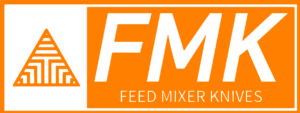## Optimizing TMR Mixer Efficiency: The Right Bale Size and Characteristics
As you prepare for the upcoming haying season, it’s important to consider how your choice of bale size and characteristics can affect your TMR mixer’s performance and the size you need. While traditional feeding methods prioritize large bales to minimize costs, TMR feeding emphasizes optimizing batching and meeting animals’ nutritional needs.
### Capacity and Bale Density
The capacity of your TMR mixer is primarily determined by its volume (cubic feet) and the number of augers (single versus twin). However, the key factor in determining if a mixer can handle a particular bale is its weight on a dry hay equivalent basis, not its physical size.
Longer hay (over 6 inches) has a density of around 3 pounds per cubic foot, while processed hay has a density of 6 to 7 pounds per cubic foot. To avoid spillage, mixers typically require 50% more volume than the weight of the hay in a dry hay equivalent basis. For example, a 1000 lb. bale of hay will occupy around 495 cubic feet in a mixer.
While it’s possible to process two bales or an equivalent amount of hay in one batch, adding a third bale significantly increases processing time due to the lower density of longer hay floating on the denser processed hay. Therefore, it’s recommended to process two smaller batches rather than one larger one.
### Bale Size and Mixer Capacity
The table below provides the recommended minimum mixer size for processing standard density bales of different sizes:
| Bale Size | Optimal Mixer Size |
|—|—|
| 4×4 | 300-400 cu. ft. |
| 4×5 | 450-600 cu. ft. |
| 4×6 (lighter) | 450-600 cu. ft. |
| 4×6 (higher density) | 650+ cu. ft. |
| 5×6 | 650+ cu. ft. (twin auger) |
### Effects of Mixer Dimensions and Augers
The physical space between the auger and the mixer wall can limit the size of the bale that a mixer can handle. Smaller mixers may need twin augers to provide adequate space for hay to drop into the path of the knives. However, the primary limitation remains the hay equivalent weight.
### Conclusion
Choosing the right bale size and characteristics can significantly impact the efficiency and cost-effectiveness of your TMR feeding operation. By understanding the principles outlined in this article, you can optimize your mixer’s performance and meet the nutritional needs of your animals.
For more information and to access our TMR sizing calculator, visit www.leo-ag.com.
**Disclaimer:** This article was written by AI. Information within may be incorrect. Consult a FMK professional for accurate information. If any trademarks have been used, FMK does not manufacture, distribute or endorse these parts.
If these trademarks have been used in this AI article they do not belong to FMK and the represented company does not manufacture, distribute or endorse these parts.
Supreme™ is a trademark of Supreme International Ltd., which does not manufacture, distribute or endorse these parts.
Penta™ is a trademark of Penta TMR, Inc., which does not manufacture, distribute or endorse these parts.
Arts-Way™ is a trademark of Art’s-Way Mfg Co. Inc., which does not manufacture, distribute or endorse these parts.
Diamond™ is a trademark of Diamond Implements, which does not manufacture, distribute or endorse these parts.
Haybuster® is a registered trademark of DuraTech Industries International, Inc., which does not manufacture, distribute or endorse these parts.
MaxiMixer™ is a trademark of Sioux Automation Center, Inc., which does not manufacture, distribute or endorse these parts.
Meyer™ is a trademark of Meyer Manufacturing Corporation, which does not manufacture, distribute or endorse these parts.
Valmetal® is a registered trademark of Valmetal Inc., which does not manufacture, distribute or endorse these parts.
Peecon® is a registered trademark of Peeters Landbouwmachines B.V., which does not manufacture, distribute or endorse these parts.
JAY-LOR® is a registered trademark of JAY-LOR International Inc., which does not manufacture, distribute or endorse these parts.
Kuhn® is a registered trademark of Kuhn S.A., which does not manufacture, distribute or endorse these parts.
Kuhn Knight® is a registered trademark of Kuhn S.A., which does not manufacture, distribute or endorse these parts.
Patz® is a registered trademark of Patz Corporation, which does not manufacture, distribute or endorse these parts.”





